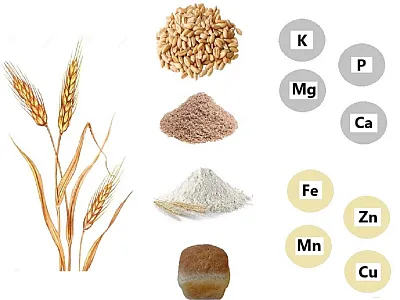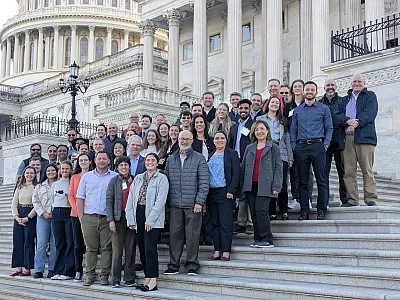Annual Bluegrass the Focus of a New Collection of Papers

Annual bluegrass (Poa annua) is considered the most troublesome weed in turfgrass systems. Turf managers employ a range of non‐chemical (cultural) control practices to increase the competitive growth and development of the desired turf species over annual bluegrass. However, these practices are often ineffective due to annual bluegrass’ wide adaptability and prolific production of viable seed. As such, herbicides and plant growth regulators are often employed as additional tools to remove this undesirable weed from lawns, golf courses, and sports fields. In some cases, applications have resulted in the development of herbicide resistance, which adds another challenge to controlling an already difficult‐to‐control weed.
A collection of 21 papers published in Crop, Forage, & Turfgrass Management brings together research and management guides on annual bluegrass. These wide‐ranging papers cover topics from seed biology, the use of plant growth regulators, herbicide efficacy experiments, and herbicide resistance surveys. Below is a sample of the topics included in this virtual issue (https://bit.ly/49atfGS).
- Carroll et al. (2021) assess the fundamental question of: When do annual bluegrass seeds become viable? In an effort to improve non‐chemical control strategies, they discuss models on when to collect inflorescences during mowing to reduced the weed seed bank.
- McCullough et al. (2005) compare the use of plant growth regulators to suppress annual bluegrass growing on golf courses.
- Reicher et al. (2020) discuss a novel application strategy to aid in improving golf course playability and to reduce the weed seed bank by using plant growth regulators to better inhibit the production of viable annual bluegrass seeds.
- Patton et al. (2019) discuss the effectiveness of long‐term annual bluegrass control strategies on golf course putting greens to assess the combination of cultural and chemical control strategies.
- Finally, a management guide by McCurdy et al. (2023) provides practitioners valuable insights on the development of integrated weed management programs for tackling herbicide annual bluegrass. The guide is practical and discusses social and economic constraints in addition to agronomic constraints in development effective weed management strategies.
The full collection of annual bluegrass papers found in this virtual issue provides a comprehensive look at the recent research efforts and contributions to this important area of research.
References
Carroll, D.E., Brosnan, J. T., McCurdy, J. D., De Castro, E. B., Patton, A. J., Liu, W., … & Westbury, D. (2021). Germinability of annual bluegrass seed during spring in the Eastern United States. Crop, Forage & Turfgrass Management, 7, e20117. https://doi.org/10.1002/cft2.20117
McCullough, P.E., Hart, S.E., & Lycan, D.W. (2005). Plant growth regulator regimens reduce Poa annua populations in creeping bentgrass. Applied Turfgrass Science, 2, 1–5. https://doi.org/10.1094/ATS‐2005‐0304‐01‐RS
McCurdy, J. D., Bowling, R. G., de Castro, E. B., Patton, A. J., Kowalewski, A. R., Mattox, C. M., … & Bagavathiannan, M. V. (2023). Developing and implementing a sustainable, integrated weed management program for herbicide‐resistant Poa annua in turfgrass. Crop, Forage & Turfgrass Management, 9, e20225. https://doi.org/10.1002/cft2.20225
Patton, A.J., Braun, R.C., Schortgen, G.P., Weisenberger, D.V., Branham, B.E., Sharp, B., Sousek, M.D., Gaussoin, R.E., & Reicher, Z.J. (2019). Long‐term efficacy of annual bluegrass control strategies on golf course putting greens. Crop, Forage & Turfgrass Management, 5, 1–10, 180068. https://doi.org/10.2134/cftm2018.09.0068
Reicher, Z.J., Sousek, M.D., Patton, A.J., Van Dyke, A., Kreuser, W.C., Inguagiato, J.C., & McDonald, B. (2020). Adding a late fall application of Proxy (ethephon) before two traditional spring applications improves seedhead control of annual bluegrass. Crop, Forage & Turfgrass Management, 6, e20031. https://doi.org/10.1002/cft2.20031
Text © . The authors. CC BY-NC-ND 4.0. Except where otherwise noted, images are subject to copyright. Any reuse without express permission from the copyright owner is prohibited.








